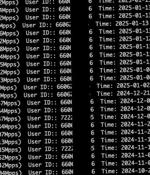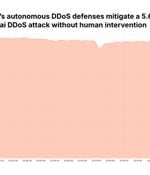Security News

An ongoing distributed denial of service (DDoS) attack targets Bohemia Interactive's infrastructure, preventing players of DayZ and Arma Reforger from playing the games online. [...]

A Mirai botnet variant dubbed Aquabot has been observed actively attempting to exploit a medium-severity security flaw impacting Mitel phones in order to ensnare them into a network capable of...

Researchers have uncovered two Mirai-based botnets harnessing Internet of Things (IoT) devices to DDoS target organizations around the world. The Murdoc botnet Qualys researchers have laid bare...

Threat actors are exploiting an unspecified zero-day vulnerability in Cambium Networks cnPilot routers to deploy a variant of the AISURU botnet called AIRASHI to carry out distributed...

Web infrastructure and security company Cloudflare on Tuesday said it detected and blocked a 5.6 Terabit per second (Tbps) distributed denial-of-service (DDoS) attack, the largest ever attack to...

The largest distributed denial-of-service (DDoS) attack to date peaked at 5.6 terabits per second and came from a Mirai-based botnet with 13,000 compromised devices. [...]

A Mirai botnet variant has been found exploiting a newly disclosed security flaw impacting Four-Faith industrial routers since early November 2024 with the goal of conducting distributed...

Holiday cheer comes in the form of three arrests and 27 shuttered domains The Europol-coordinated Operation PowerOFF struck again this week as cross-border cops pulled the plug on 27 more domains...

As part of an ongoing international crackdown known as Operation PowerOFF, international law enforcement has seized over two dozen platforms used to carry out Distributed Denial-of-Service (DDoS)...

A global law enforcement operation has failed 27 stresser services that were used to conduct distributed denial-of-service (DDoS) attacks and took them offline as part of a multi-year...